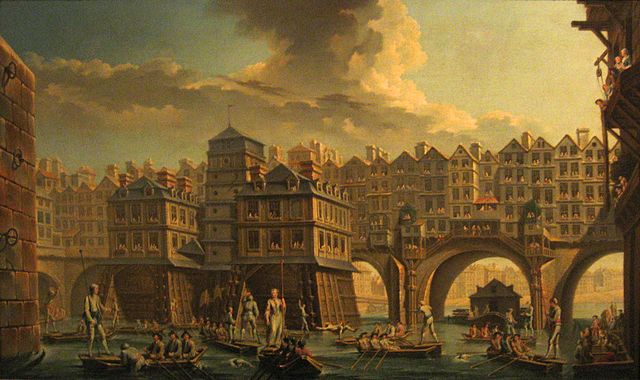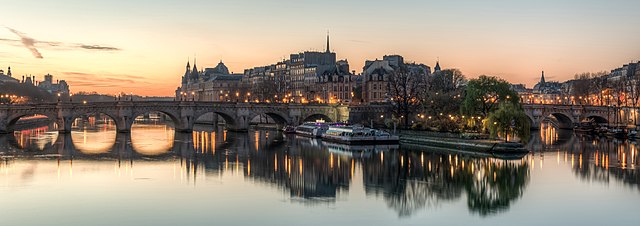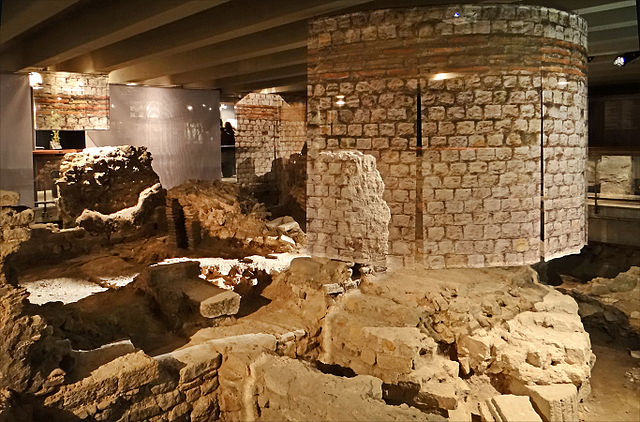The Pont Notre-Dame is a bridge that crosses the Seine in Paris, France linking the quai de Gesvres on the Rive Droite with the quai de la Corse on the Île de la Cité. The bridge is noted for being the "most ancient" in Paris, in the sense that, while the oldest bridge in Paris that is in its original state is undoubtedly the Pont Neuf, a bridge in some form has existed at the site of the Pont Notre-Dame since antiquity; nonetheless, it has been destroyed and reconstructed numerous times, a fact referred to in the Latin inscription on it to honor its Italian architect, Fra Giovanni Giocondo. The bridge once was lined with approximately sixty houses, the weight of which caused a collapse in 1499.
The Pont Notre-Dame in Paris.
La joute de mariniers entre le pont Notre-Dame et le Pont-au-Change, by Nicolas-Jean-Baptiste Raguenet, 1756, clearly shows the houses atop the bridge.
Destruction of the houses on Pont Notre-Dame in 1786, painted by Hubert Robert (1733–1808)
From the pont d'Arcole, a view of the bridge with 5 arches.
Île de la Cité is an island in the river Seine in the center of Paris. In the 4th century, it was the site of the fortress of the area governor for the Roman Empire. In 508, Clovis I, the first King of the Franks, established his palace on the island. In the 12th century, it became an important religious center, the home of Notre-Dame cathedral, and the royal chapel of Sainte-Chapelle, as well as the city hospital, the Hôtel-Dieu. It is also the site of the city's oldest surviving bridge, the Pont Neuf.
Île de la Cité, in the center of Paris (2014)
Île de la Cité (2009)
Image of Jupiter on the Pillar of the Boatmen (1st century AD), Cluny, Musée National du Moyen Age
Archeological crypt under the Parvis Notre-Dame – Place Jean-Paul II








